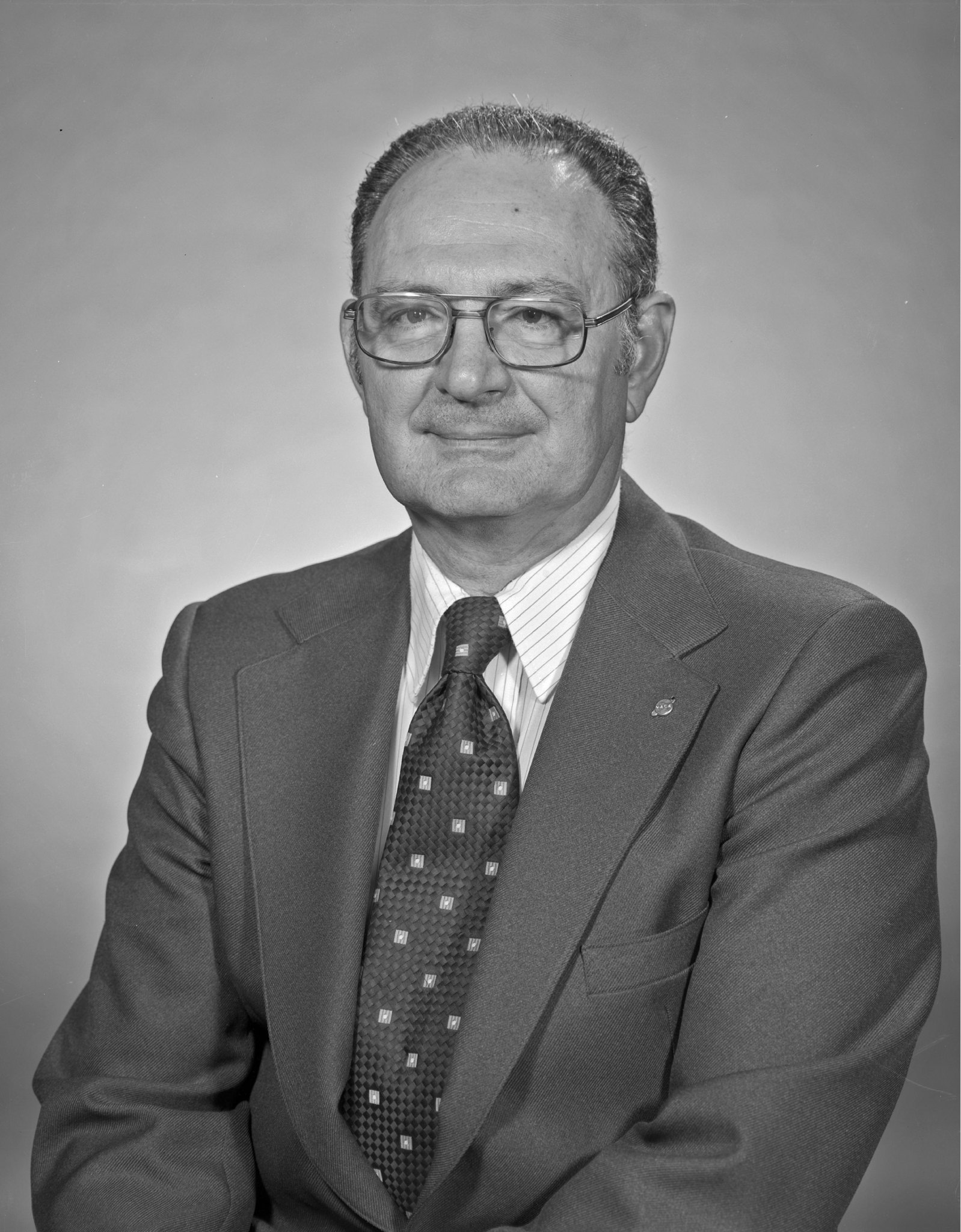Cornelius Driver
Cornelius “Neil” Driver (1925–2009) was a visionary of advanced aeronautical systems, especially supersonic civil transports, for which he was NASA’s chief advocate, technical expert, and spokesman.
Driver was born in Timberville, Virginia, and graduated from high school in Clearbrook, Virginia, near Winchester in northwest Virginia. He grew up on a farm, but was interested in airplanes and wanted to be a pilot. He entered the service in 1943 and became a pilot in the Army Air Forces, near the end of the war. Driver was trained to fly the B-25, B-26, and A-26 twin-engine bombers. After the war, he attended Virginia Polytechnic Institute and earned bachelor of science degrees in both aeronautical and mechanical engineering in 1950. He taught school for a year, and then joined the Langley Aeronautical Laboratory.
His 35-year career with the NACA and NASA began in 1951 as a research engineer in the Langley 4- by 4-Foot Supersonic Pressure Tunnel (SPT) where he specialized in supersonic aerodynamics, stability and control, airframe propulsion integration and aircraft system integration. His early career was spent in experimental wind-tunnel research and integrated design of supersonic cruise aircraft.
At the time, interest in supersonic cruise military aircraft was rising. Because of its size and speed capability, the emerging Air Force North American XB-70 became the technological focal point of industrial and governmental efforts to develop supersonic civil transports. Langley had responded to Air Force requests for tests of the revolutionary aircraft in several wind tunnels for configuration development and independent assessments of the XB-70 design’s supersonic efficiency. Driver led testing of the configuration in the SPT and was a key participant in discussions with the military and industry during the program, including membership on a special Air Force Scientific Advisory Board study of the aircraft.
In anticipation of a major national effort on supersonic transport configurations, NASA began configuration studies and wind-tunnel testing in 1959 in a program known as the NASA Supersonic Commercial Air Transport (SCAT) program. The seven-year activity produced 19 different NASA candidate configurations. During the program, Driver was the NASA manager of a contract with Boeing to evaluate the NASA designs.
In the 1960s, he was very influential in the national effort to develop a U.S. Supersonic Transport (SST), leading coordination efforts with the Federal Aviation Administration, Boeing, Lockheed, and McDonnell-Douglas. After 10 years of wind-tunnel testing, he changed careers and entered the field of systems engineering.
From October 1969 to June 1971, he was temporarily assigned to the Appropriations Committee of the U.S. House of Representatives, for presidential and congressional assistance in assessing the development of critical U.S. military fighters–the Navy F-14 and the Air Force F-15, both of which subsequently had extremely successful careers as first-line fighters.
Driver teamed with Bill McGruder, then on the White House staff, to propose a new NASA effort directed at fundamental research to provide technology for future SSTs. Their proposed program was initiated in 1971 as the NASA Supersonic Cruise Research (SCR) program. Driver stimulated NASA’s research efforts in SCR in the areas of aerodynamics, structures and materials, and advanced engine concepts by providing leadership, coordination between NASA centers, and industry interactions. However, as the 1970s ended, wide-body subsonic transports that offered the public much lower price tickets were introduced, and became the primary interest of airlines.
From 1979 until his retirement in October 1986, he served as Chief of Langley’s Aeronautical Systems Division Office, with responsibilities for studies of revolutionary civil and military aircraft and determining the potential payoff of disciplinary advances for all fixed-wing aircraft. The studies formed a basis to guide the priorities of NASA technology investments. The scope of advanced configurations studied was quite impressive, ranging from hydrogen-powered cargo transports to twin-fuselage transports.
Driver authored or co-authored more than 50 technical reports and papers; received two awards from the Federal Aviation Administration for his work on the SST evaluation teams; and received two Langley awards for leadership in supersonics. He was an Associate Fellow of the American Institute of Aeronautics and Astronautics and was elected a Fellow of the Royal Aeronautical Society. He was a member of the Engineers’ Club of the Virginia Peninsula, and after retirement he was a strong NASA supporter, heading the Langley Alumni Association, and chairing the last NACA reunion.
Neil Driver exemplified the “can do” spirit and imagination of NACA and the founders of NASA. His problem-solving ability and scientific abilities were even on display in his battle with cancer, wherein he personally took control of his treatment and exceeded all medical expectations. A 10-year cancer survivor, his body was weakened by chemo treatments, but strengthened by his perseverance in the application of electronic and naturopathic research.
Driver married his high-school sweetheart, Juanita Brown Scrivener in 1947. After she passed in 1978, he married, Gloria W. Driver. He died on July 29, 2009, at the age of 83. He was survived by his second wife, Gloria W. Driver, six children and two stepchildren.



























